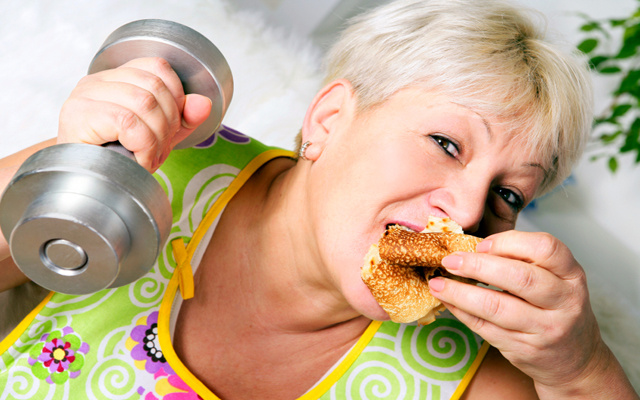 |
This blog may seem pretty blunt and harsh, but it's important to read if you are not seeing results in losing weight. Hard work= hard body!
Most people overestimate how active they actually are. With my clients I am a stickler when it comes to activity. I want them to get in their recommended 10,000 steps (~5 miles/day) WITHOUT including their planned exercise in that. So, even if you take a spin class or run for an hour, I want you walking 10,000 steps too. People nowadays are MUCH more sedentary than they were even a few decades ago. If you went to a big college, you hopefully walked everywhere you had to go, and it was no big deal. Now that you are out of that environment, it's like you have to plan a walk as your exercise. That shouldn't be. If you are able, and it is a safe environment, you should definitely walk anywhere you need to go if it is <1 mile away (I would argue even 2 miles away isn't bad). A 1 mile walk will take you less than 20 minutes, so if you have the time, don't be lazy, and walk! You'll benefit too for the fact that you'll be saving gas $$$ and not contributing to pollution.
As I have posted about before, people who "go to the gym" but are sedentary the rest of the day may not be any healthier than someone who doesn't do a planned workout but has a job that they are at least up and moving. Sitting is bad for you, so try to avoid it, especially after meals.
No matter how active you are, you still need to be conscious of your food choices and realize it is much easier to eat calories than burn them off. Even if weight isn't your concern, or you are trying to gain weight, focus on healthy foods so that you can keep your energy levels high and your body in good health. I may burn 130 calories on my 1.33 mile walk to work, but I usually eat a KIND bar on the way home... so that's 200 calories- net gain of 70 calories. If people who are trying to lose weight partake in similar actions, just that 70 extra calories per day can theoretically lead to slightly less than 1 pound gained per month. So, if you are the type of person who rewards yourself after a hard workout like spin with a 400 calorie smoothie, you are probably offsetting the calories you burned during that workout.
My point is, I want you to be active, but I don't want you to think that your activity level is permission to eat whatever you want. Plus, machines and instructor generalizations about calories burned during a workout tend to be an overestimate for most people. Most of those estimations would be for a large man who is working very hard. If you are barely breaking a sweat and not out of breath for the majority of a one-hour class, I doubt you burned anywhere near 500 calories.
Keep in mind one average-sized homemade chocolate chip cookie is about 100 calories, so just think about running at least a mile to burn that off. When you are at a Superb owl party this weekend, think about each item before you consume it:
One regular beer= 150 calories
8 oz wine= 200 calories
1 hot chicken wing= 100 calories
10 potato chips= 100 calories
2 tbsp hummus= 80 calories
6 wheat thins= >50 calories
So again, think before you eat and sit less, move more!
Picture Source: http://isagenixhealth.net/wp-content/uploads/2013/07/Workout-while-eating640x400.jpg




